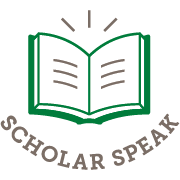
Question mark on a blackboard by Pixabay licensed under Pexels
Below is what he had to say:
For those new to the process, do you have any tips on how we start researching? How do we know what to research?
If you mean doing research in your areas of study or work, then I recommend always starting with your strongest interests or significant questions in your field. These may come out of your coursework, your job duties, projects you’ve worked on, or things you’ve been reading about. Pay attention to what other researchers or practitioners in your field are writing and talking about. See what questions they’re asking, what research has already been done, and what gaps remain to be filled. Read journal articles, attend conference panels or talks in your field, join a professional organization (or at least browse their websites). These can provide lots of ideas for new research, but ultimately, you have to pursue questions that interest you.
The key components of any research you hope to publish are these:
1. What are your research questions? What are you trying to understand, analyze, explain, argue, or demonstrate through empirical evidence or persuasive argument? Your questions should be relevant to your field of study and address the needs of other researchers, practitioners, or students. This is the Why of your research.
2. What is your methodology/approach? Are you gathering and analyzing new data, working with existing data from previous studies, using case studies, interviews, reviewing the literature on a topic, offering an original (qualitative) argument, explaining a project or process in your workplace, etc? This is the How of your research.
3. Who is your audience? Other researchers in your field, librarians, other professionals, students, the general public? This will help determine what kind of journal you want to aim for and what kind of methods and analysis you’ll need to explain your topic. This is the Who of your research.
If your original question was about researching publication venues, you might start by checking out our Increase Your Scholarly Impact guide, specifically the section called “Consider Your Publication Options” for a list of questions to ask yourself as you begin looking at options, and some links to resources for investigating particular journals or publishers. You’re also welcome to talk to me (john.martin@unt.edu) or a subject librarian in your areas of interest for more ideas on finding publication venues. Your faculty advisors or library supervisors and mentors are also a good source for finding leads.
Where should we look for calls for proposals?
The best place to find calls for submissions to journals is on the journal sites themselves. Some journals have calls for specific topics or special issues; others just have a general “Submissions” tab that explains how to submit articles to the journal. Generally, these are open submissions, meaning that they can be on any topic that falls within the journal’s scope (see their “About” page). It’s usually not necessary to submit a proposal, but rather, you submit complete articles, which the editor will review for fit or scope. The article should follow the submission and author guidelines that are available on the site. If you’re unsure about whether your article idea fits with the journal before you start writing, you can always send the editor an email to inquire. Let them know that you’re an early career researcher, that you’re starting on a new article project, and that you want more information on the types of work that the journal is interested in (if that isn’t already clear from their About page or their Submissions guidelines).
Calls for book chapters or articles that will be part of a published collection are often disseminated via listservs, newsgroups, or social media pages hosted by professional organizations, publishers, or the editors of the volume. Following or subscribing to a few of these in your areas of interest is a good idea.
If you’re looking for Calls for Proposals for conference papers, posters, roundtables, or other events, there are a number of options: You can check the websites of the hosting organizations (look for an “Events” or “Conferences” tab), follow their social media pages, or subscribe to a listserv of organizations that you belong to. Besides the major library organizations like ALA, the ACRL, the TLA, etc., you can also follow or join more discipline-specific organizations or those that represent particular segments of the library profession. See this page for a list of library professional organizations: https://en.wikipedia.org/wiki/List_of_library_associations
Do you recommend any resources on how to write more… scholarly?
In fact, we have a Scholarly Writing Guide specifically for that! There are a number of resources there for developing your writing both generally and for academic and professional writing. You might start with a couple of the shorter articles on this page, and then decide what aspects of your writing need further development with some of the books or other resources listed on that guide. There’s also a page on that guide about getting published.
How do we design a poster, and represent the info well in a small space?
I’m not a real expert on poster-design, since I don’t come from a discipline (English) that frequently uses posters at academic conferences. But library conferences do often feature posters, so I’ve now been inspired by this question to add a tab to our Scholarly Writing Guide specifically on posters and conference papers! It may take me a couple of weeks to get that up and accessible, but here are a few beginning resources you might consult: How to Create a Research Poster: Poster Basics (NYU Libraries) Design Guide: Academic Posters (UNC Libraries) Creating Scholarly Posters in PowerPoint (UCSD Libraries)
Are there any academic journals that publish just graduate students? (the big journals seem so intimidating!)
There are, in fact, a lot of academic journals specifically for graduate students and early career professionals, though almost all scholarly journals will accept graduate student work if it’s of the quality that they’re looking for. Many journals will indicate this in their Author or Submission guidelines, and that’s a good sign that they’re open to work that’s still in development or at an early stage. A lot of newer journals, “niche” journals (those on specialized topics), and Open Access journals are very open to early-career work. Journals that utilize “open” peer review or “formative/developmental” review are also likely to work with new scholars who may need more feedback or revision suggestions.
By “big journals”, you probably mean the more prestigious or highly-ranked journals in some fields that can be very competitive. This is true whether or not you’re a graduate student or early-career researcher! So it’s probably best not to start with those kinds of journals your first time out. Get a couple of publications under your belt, learn how to go through the writing, peer review, and revision process, and develop a project that you feel is strong enough to submit to a major journal. Don’t get discouraged if it’s rejected or sent back for revision, as this is common even for experienced researchers.
Do you have any books you recommend for graduate students new to the whole process?
There are a number of books listed on the Scholarly Writing Guide that might be useful. Wayne Booth’s The Craft of Research is a classic on doing serious academic research & writing, though some of the information may be a bit dated. Wendy Belcher’s Writing Your Journal Article in 12 Weeks might be useful for some more practical tips specifically on writing for journals. There’s also a short video on that guide that might be worth watching for an overview of the journal submission process.
Has the digital age brought on any new trends with Scholarly Communication that are worth pursuing? Like with social media and blogs?
Absolutely. There’s been no greater change or challenge to the whole system of scholarly communication than that brought about by digital technologies. It’s worth reading the ACRL’s short white paper, “Principles and Strategies for the Reform of Scholarly Communication” (2003) for a statement of how that technology, and many of the legal and technical questions it raises (especially about access, dissemination, and control), have impacted the way with think about scholarly communication, especially in libraries. Social media and blogs are two of the ways that scholarly work now gets disseminated, as are online scholarly profiles, web-pages, listservs, repositories, and databases, but we’re just beginning to discover what effects they have on things like “impact”, citations, and bibliometrics (all the ways that we measure how scholarly work is read, cited, and used). Scholars have, to some extent, become principal promoters of their own work in ways that were once relegated to publishers, professional societies, or institutions. That means we have more direct control over how our work gets shared and used, but also more responsibility for making it accessible, relevant, and useful to our audiences.
What was your first experiences like with Scholarly Communication?
Like many of you, I never really thought about engaging in scholarly publications until graduate school, and even then, we weren’t under the kind of pressure to start publishing at such an early stage that many students are now. There were no publication requirements when I earned either my Ph.D. or my MLS, and the first time I had any expectation of publishing was when I entered my first full-time, tenure-track job. While still in grad school, I did participate in conferences, so my first experiences were delivering papers at scholarly conferences. For me, these were literary conferences where we typically deliver a 15-20 minute paper, often just read directly from a written copy, on a panel of 2-3 other people. Then there would be a Q&A session afterward. The first time I did so was at an International Poe Conference with two other people, both big-name scholars in the field. Needless to say, I was terrified and intimidated! But both of them, and the audience, were very kind, supportive, and generous in offering me suggestions and ideas for developing my research, so it ended up being a good experience.
Only when I became a librarian did I attend conferences where reading a paper aloud on a panel wasn’t the main mode of delivery. Slide presentations, videos, posters, roundtables, free-form discussions, workshops, and technological demonstrations were all new to me! I’m still learning how to do some of these things effectively or comfortably.
In terms of publishing, I began like many people do with short pieces: book reviews, encyclopedia entries, short articles in niche journals related to topics I had previously researched. I mined my dissertation for my first couple of articles and published a book chapter on pedagogy (“teaching horror”). Since becoming a librarian, I’ve published a couple of chapters or short articles on scholarly communication topics—careers, creating a journal—but also continued working in my subject areas with a recent chapter on Poe and another article on comics studies in progress. One of the advantages of working in libraries, I think, is that we aren’t bound by particular disciplinary practices or subject matter. We can publish on library-related topics or anything related to the many disciplines and curricula that we support in the library. Creative work like exhibits, performances, curatorial work, editing, and pedagogical work can also count as “scholarly activity”, depending on your institution’s guidelines.



Leave a Reply